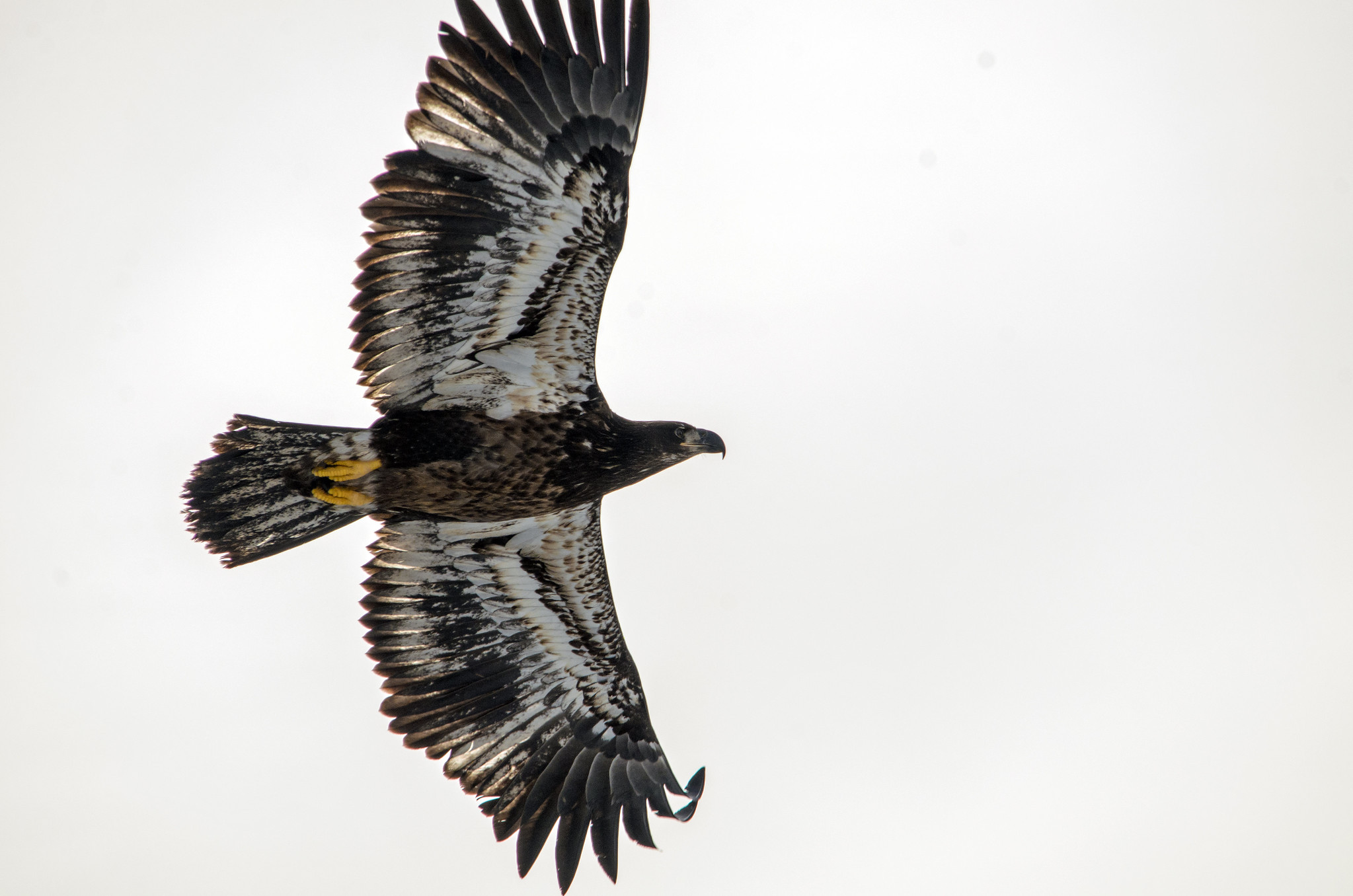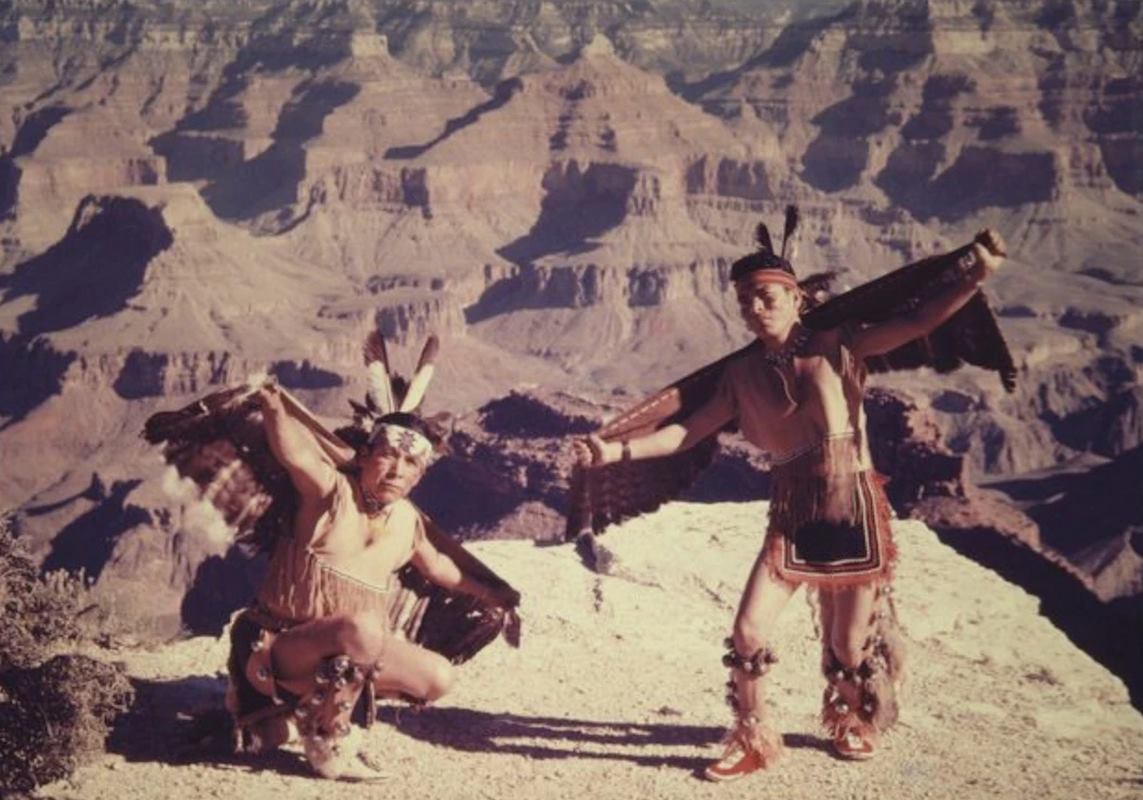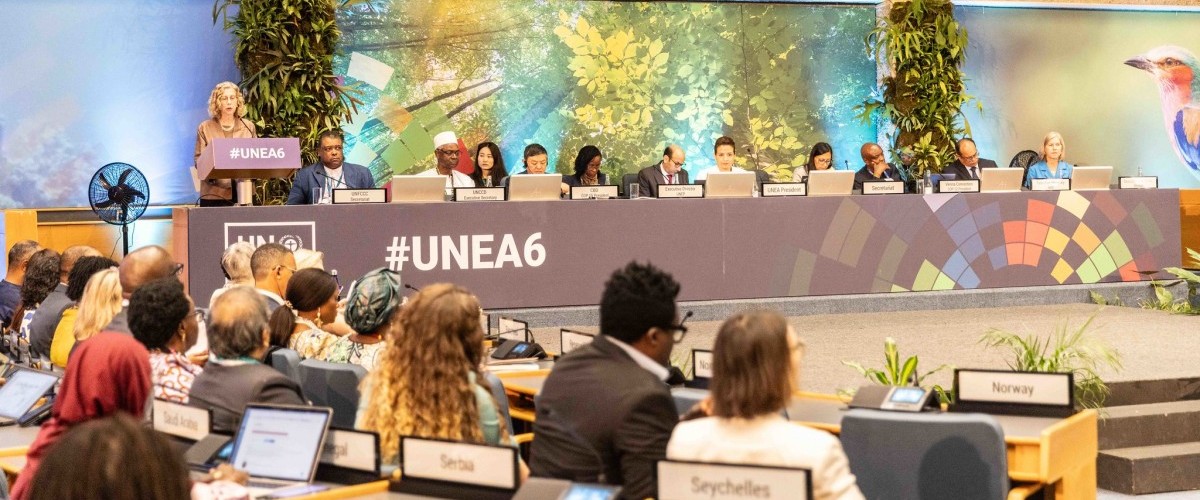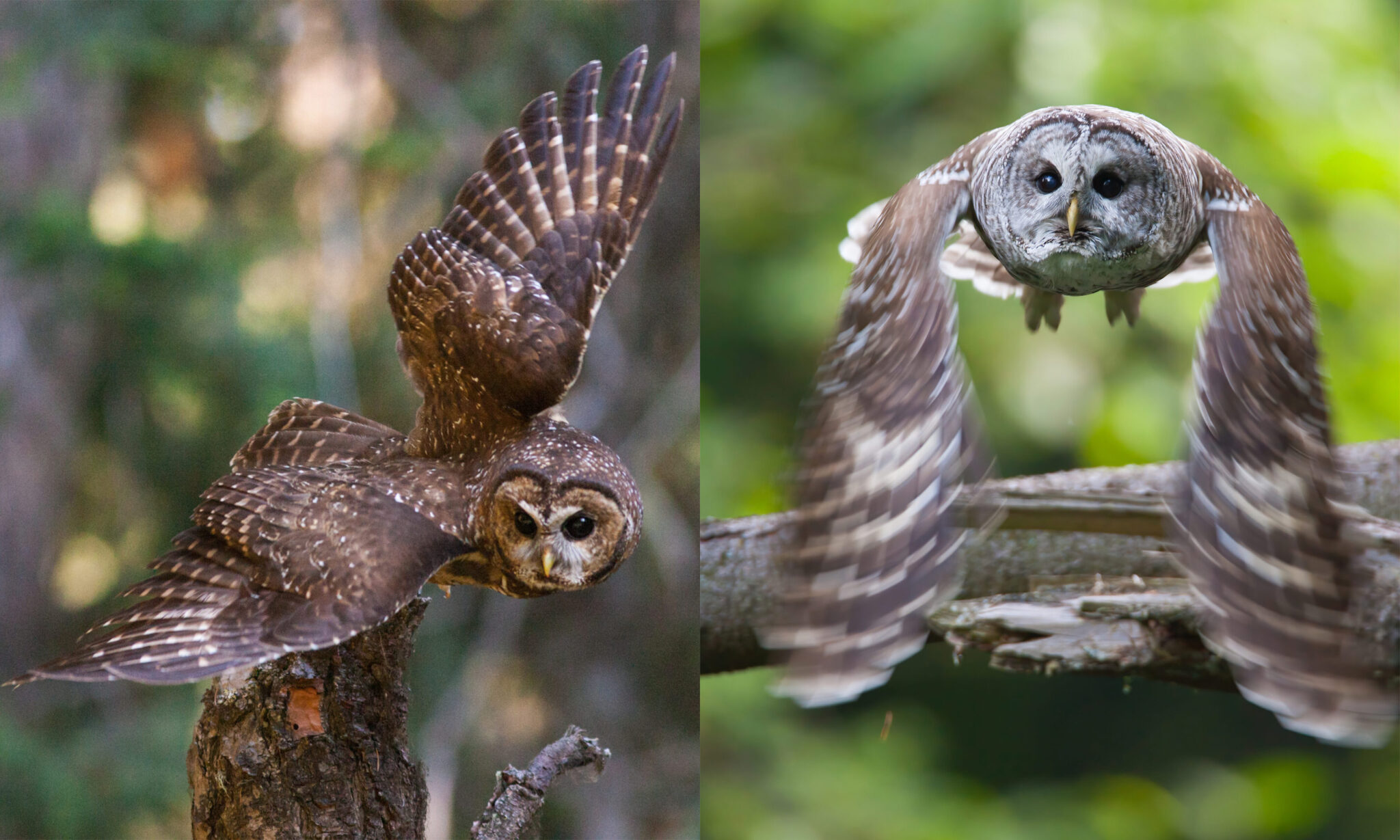Extraordinary reporting published by Animal Wellness Action and written by fish and wildlife reporter Ted Williams shows that, by way of something approaching a conspiracy, the US National Parks Service (NPS) Fish and Wildlife Service (FWS) and Dept, of the Interior (DoI) allow certain Native American tribes like the Hopi to capture, torture, and ritually sacrifice bald and golden eagles, as well as red-tailed hawks, inside America’s national parks.
The ritual involves strapping the young eagle or hawk to the roof of a dwelling, overfeeding it, lavishing it with children’s toys and praise, and giving it messages to carry up to the gods. Trapped in this way for 80 days, the eaglets are then smothered with blankets or cornmeal and stripped of their feathers.
Far from being done on rare occasions, it’s possible this ritual, according to Williams’ peerless reporting, occurs often enough to leave the Hopi Reservation as “aquiline black holes”.
According to Willams, writing on the subject all the way back in 2001 for the Audubon Society, Hopi are the only citizens in the country allowed to kill eagles and hawks. They are allowed to collect them on their own land, Navajo land, and public land managed by the US Forest Service and the Bureau of Land Management.
Williams was on the beat when, in May 1999, the Hopi tried to take eaglets from Wupatki National Monument, a desert preserve of archaeological sites spanning 32,000 acres in Arizona near Flagstaff. National Parks and National Monuments are, and have been since almost their inception, sanctuaries where hunting and harvesting are forbidden. The tradition is that these places are reservoirs of North America’s native and migratory species and help replenish them in the regions beyond the borders of the monument or park. Up until Williams and others reported on it, there had never been permits issued for the collection of eagles from these reservoirs.
However, according to documents obtained by Public Employees for Environmental Ethics (PEER) under the Freedom of Information Act, Don Barry, President Bill Clinton’s Assistant Secretary for Fish, Wildlife, and Parks suggested at a staff meeting that the robbing of eagle nests at Wupatki should proceed on a “don’t ask/don’t tell” basis since the Hopis probably had been doing it all along without the DoI’s knowledge or regard for federal law. Some at the meeting felt this was likely true.
Having been convinced by the Hopi’s tribal chairman Wayne Taylor, Barry eventually managed to override a series of DoI determinations on the Hopi’s requests to take eaglets, and in January of 2001, appearing in the Federal Register was a law that read “the National Park Service has preliminarily determined that under certain circumstances it is appropriate to allow the Hopi Tribe to collect golden eaglets within Wupatki National Monument”.
This was later replicated when NPS allowed the Jemez Pueblo tribe in New Mexico to torture and sacrifice bald or golden eagles (so far, one of either species) it captures on the Valles Caldera National Preserve, another unit maintained by the NPS and protected from all hunting and harvesting activities.
“Americans and their legal system acknowledge the rights of domestic dogs and cats. What about the rights of wild raptors? And what about the rights of Americans—red, white, black, young, old and yet unborn—who cherish or will cherish living raptors?” Williams wrote in 2025.

Enormous implications
In 2001, an Interior Department raptor biologist who asked Williams not to be identified for fear of political reprisals, offered a haunting premonition that golden eagles were already assuredly threatened according to the US Endangered Species List, and that if the Hopi were allowed to continue their practice in Wupatki, the goldens might disappear from the state.
“We might as well be putting DDT out there,” said the biologist, referring to the chemical that contributed so much to the decline of predatory birds in the US in the 20th century. “There are no young birds coming along. We have absolutely no way to justify handing out 40 take permits a year. Some conservation group needs to sue us. It’s a no-brain winner”.
“The NPS Organic Act requires the agency to ‘conserve the scenery and the natural and historic objects and wild life’ of all units in which hunting is not authorized, ‘leave[ing] them unimpaired,’ a provision that may be waived only by Congress” Williams wrote this year, following news that the FWS issued take permits in Valles Caldera. “What’s more, the National Environmental Policy Act [NEPA] requires that: 1. NPS notify the public about actions that would affect a unit’s environment, and 2. that the public have an opportunity to comment on such actions”.
Biden’s NPS director hid both his decision to allow the eagle harvesting and Environmental Assessment from both the public and the NPS itself.
“The implications are enormous,” Frank Buono, retired Deputy Superintendent of Joshua Tree National Park, told Williams. “The Jemez Pueblos can just as easily take eagles from Grand Canyon National Park because nothing legally distinguishes taking wildlife from one and not the other. And word will spread to other tribes. If the Jemez Pueblos can take eagles from the Valles Caldera National Preserve, why not the Ogalala and Yankton Sioux from Badlands National Park, or the Chippewa from Voyageurs National Park?”
A member of PEER’s legal counsel told Williams that in 32-years of environmental law, he has never seen such a direct-from-headquarters action on park issues, and over a single park no less.
In 2022, 2023, 2024, and twice in 2025, DoI agencies approved eagle and hawk harvesting permits to tribal nations. In 2022, the Hopi were granted permits to take 50 red-tailed hawks annually until March 31st, 2026. And it issued them a “take” permit for 40 golden eagles, before issuing them a permit for another 40 in 2024.
Is killing an eagle ever acceptable?
But bald eagles, despite being a national icon and the national bird of the nation, are not untouchable: utility companies that operate wind farms, for example, can pay $36,000 for the right to avoid fines and penalties that would otherwise be incurred from injuring or killing birds, up to 4,200 eagles per year. That limit, as high as it is, was actually removed last year.
In 2020, estimates for the bald eagle population in the lower 48 states totaled 316,700 individuals. In 2016, the golden eagle population was estimated, when included Alaska, to be about one-tenth of that.
However, hundreds, and in actual fact well over 1,000 golden eagles, to use this species as an example, die every year through electrocution, collisions with buildings and wind turbines, and poisoning through lead or other toxic substances. Anthropogenic mortality accounted for an average of 74% of golden eagle deaths after their first year, so while the number of allowable harvests is minimal, that isn’t to say the species is able to flourish without any dangers. In a way, citizens in a city or state are collectively allowed to kill these eagles simply by maintaining America’s 21st century infrastructure.
Wayne Pacelle, the President of Animal Wellness Action (AWA), spoke to WaL about his organization’s opposition to the permitting decisions by DoI and related agencies, particularly under the previous administration. Working for 30 years on a variety of issues from the illegal wildlife trade to factory farming, Mr. Pacelle had long been aware of the practice of eagle sacrifice.
Why do you suppose this is going on? I was generally aware of this problem because of Ted’s [William] Audubon story 20+ years ago, but the prior administration had a Native American as an interior secretary, Debra Haaland, and the National Parks Service director Dallas Sams also comes from a Native American tradition, and it seemed to me that there was a very reflexive instinct to provide allowance for the killing of wildlife during the administration if it were conducted by Native Americans.
What are some objections that you and AWA have to the harvesting of eagles? People have an enhanced experience at these NPS lands when the animals are not assaulted, harassed, and attacked—they don’t run at the sight of people. We have 350 million visits to America’s National Park Service lands every year, they’re an international treasure for nature lovers of all kinds and we want to see the animals protected on those lands. You know, I think animal sacrifice is an outdated, archaic practice that different peoples throughout the world—of varying ethnicities, religious and spiritual traditions, geographies—have shed; and it’s time to shed this practice in the American Southwest.
Mr. Pacelle continues… There are cumulative impacts that are in evidence with bald and golden eagles. You’ve got wind projects, you have lead ammunition which is killing eagles; a 2022 Science study basically said more than half of all eagles had accute toxicity from ingestion of lead… There are a range of other threats, and I also think on the straight moral question—not everything is derivative of population scarcity—we have values in our country.
Has AWA considered legal action against the DoI and its agencies? Legal action to hold the government accountable is definitely in our strike zone, in fact, we’ve sued the DoI and FWS over its massive barred owl kill plan that was finalized during the last quarter of the Biden Administration. It’s a plan to kill more than 450,000 barred owls meant to reduce competition between barred owls and spotted owls. It’s the largest mass raptor cull that any government in the world has ever contemplated by a factor of one-thousand times. So we will certainly examine any legal opportunities that exist for us here [with eagles], but I think we’re hopeful that the Interior Department under the new leadership will not countenance animal sacrifice.
Could there be more productive ways of protecting eagles than interfering with Native American ritual? Anytime you comment on a practicular project, you inevitable focus on that project for communications purposes, but the fact that at a particular moment you focus on a project doesnt mean you cease working on those other mortality factors. I don’t think there’s anyone else in the US that’s worked more on stopping lead ammunition dispersal and fishing tackle sinkers than me: and eagles are at the center of that.
Could you expand on that? Among the eagles that are alive in the United States and North America, the lead issue is perhaps the most urgent risk, but in order to protect eagles, you want to address as many of these risks as possible. At the same time you have to listen to the arguements of different industries, but we’re going to make the argument on moral grounds, and we’re also going to make the argument on alternative means that are available to those industries. You know, with lead ammo, you can use steel, bismuth, tungsten, and other alloys that work beautifully. I worked in 2012 to pass a law in California to ban all lead ammunition, and its worked beautifully… we’ve saved countless thousands of eagles and protected the California condor where the number-one risk factor was lead ammunition. So I stand second to no one in addressing those other risks, but I’ve gotta’ call balls and strikes and animal sacrifice is outside the bounds of our global community, whether it’s Islam, Christianity, Judaisim, or Native American traditions, animal sacrifice is no longer acceptable.
Do you feel there is anything prejudicial about opposing a Native American tradition? There are tremendous resources for feather aquisition for these tribes, there’s the National Forensics Laboratory run by the Fish and Wildlife Service in Aspen, Colorado, there’s also a FWS resource center in Denver that has eagle feathers, both bald and golden, so, you know, animal sacrifice has waned over the last 2,000 years because there have been adaptations in these traditions to retain their power and value and cultural and historical significance without gutting them. There are practical steps that can be taken to retain those traditions. And this tradition among the Hopi or Jemez Pueblo… we want them to reflect that we all live in a global community: none of us is isolated. Indian nations have responsibilities to the federal government and fellow community members just like we non-tribal communities have responsibility to the tribes. So this is an attempt to honor religious freedoms but it’s also an attempt to honor the norms that are driving the end of animal sacrifice all over the world. WaL
We Humbly Ask For Your Support—Follow the link here to see all the ways, monetary and non-monetary.
PICTURED ABOVE: Hopi Indian Eagle Dancers. Still living in their pueblos on lofty mesas, these Indians have for centuries dressed like soaring eagles to dance their ritual steps. PC: Josef Muench, with Northern Arizona University Cline Library.



